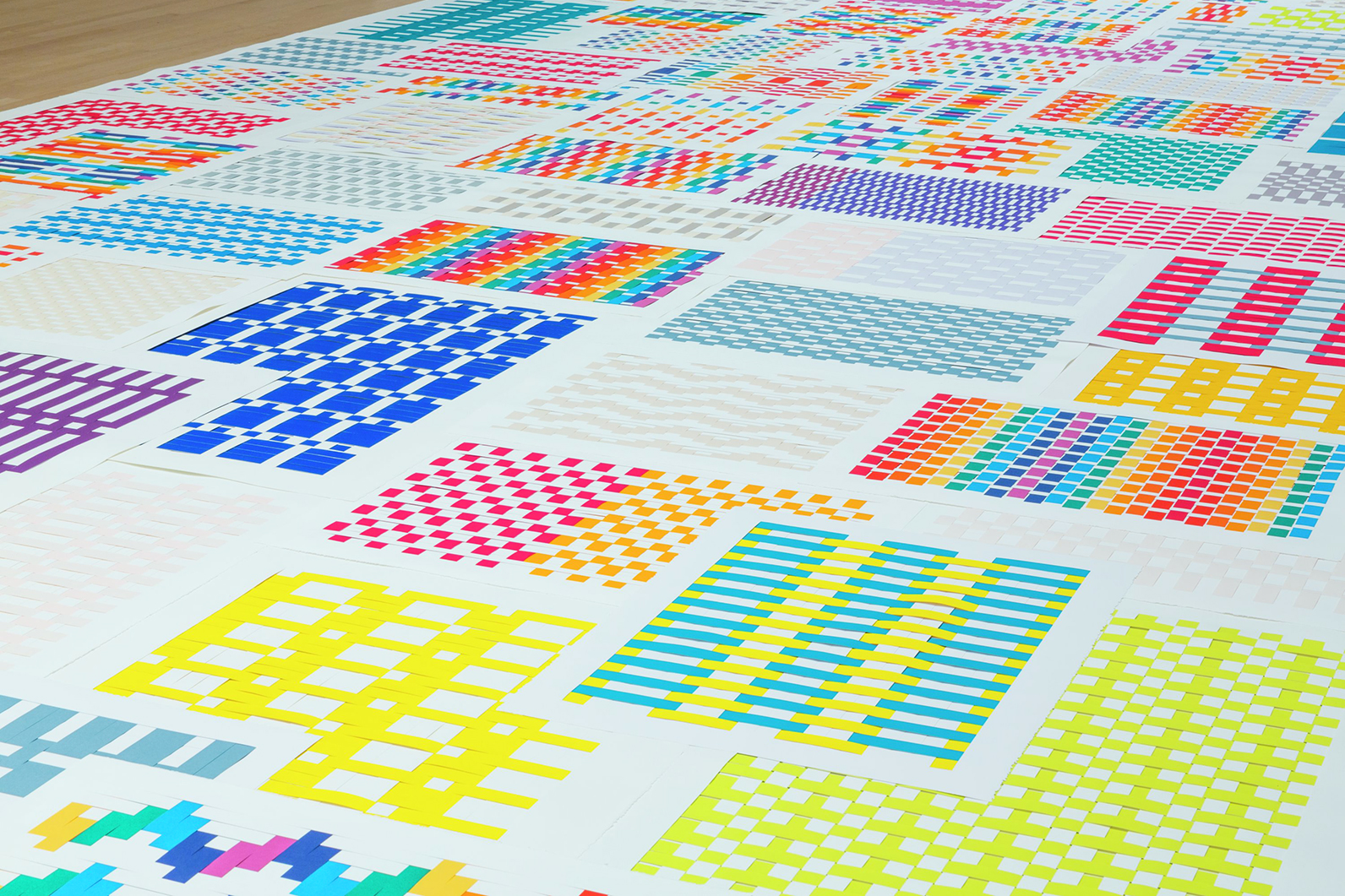We may earn revenue from the products available on this page and participate in affiliate programs.
Home should be your happy place—now more than ever. Head to the #MakeYourselfAtHome hub to find tiny projects, feel-good recipes, and clever decorating ideas to make each day a little bit brighter.
Maybe you think crafting isn’t your thing. But Sarah Urist Green argues that everyone has a creative side. As the host of The Art Assignment and author of the new book You Are an Artist, she ties together art history with easy, accessible how-to’s you can do right at home. In this excerpt, she explains how one artist found her medium through an unexpected school assignment, and how you can try it yourself:
Michelle Grabner’s son came home from kindergarten one day and presented her with a blue and red paper weaving. The activity was meant to help him learn to operate scissors, manipulate paper, and build fine motor skills. His weaving was simple but also a revelation. Grabner decided to make her own—and then made many more.
For Grabner, weaving is a way of creating a pattern. And whether she’s meticulously rendering paintings that reproduce the repeating designs of gingham fabric and paper towels, or making bronze casts of crocheted and knitted blankets, pattern and repetition are near constants in her work.
What Grabner appreciates in patterns of all kinds is that they represent ordered information. Lingering in these systems of order is a critical aspect of her work, and [she] embraces the boredom that can be involved in her highly repetitive process. She listens to soap operas, baseball games, and serial television shows with recurring characters. When immersed in making, Grabner thinks about when the pattern pulls, resists, veers from course, or breaks. Her mind runs through the math at hand and how slight variations in color and pattern can generate startlingly beautiful complexity.
The How-To
1. Find one sheet of paper to use as your base. Make evenly spaced cuts into it, stopping before you reach the edges so the perimeter of the paper remains intact. 2. Find other sheets of paper to cut into strips. 3. Weave the strips into the base paper, making a pattern as you go.
Follow these tips and your weaving will be even more inspiring:
Embrace the Rainbow
Work with at least two colors, if not more. Make your base paper one color, and then pick one or more different colors for your strips.
Get Precise
Measure out even slits on the base paper with a straight edge and make pencil marks before you cut, leaving a border of at least an inch around the edge of the paper. An X-Acto knife is helpful here, but you can also work with a box cutter or scissors. Then make strips from another color (or two or three). These can vary in width but should be longer than the slits in your base paper.
Go Upside Down
When your prepared base paper and strips are ready, work from the side of the paper with the pencil notations. Keep in mind that your pattern will be negative when you flip it over.
Plan Your Pattern
Take your first strip and weave it in, keeping the pattern consistent (e.g., under two, over one, under two, over one…), and pull it down to the ends of the base paper slits, making sure it’s flat and doesn’t buckle. For your second strip, change the number pattern (under one, over three, under one, over three…), and then pull it to the bottom of the paper. For the third strip, either change the number pattern again or return to the first strip pattern, pulling it down each time so that it sits tightly against the previous strip. Continue on, keeping the pattern consistent. You decide how simple or how complicated it gets.
Check your emerging pattern on the reverse as you work. If you don’t like it, pull the strips out and try another pattern. Or not! Be surprised when you do the final flip.
Finish the Edges
When the base paper is filled with tightly packed strips that are still lying flat, trim the strips so that they don’t extend farther than the edge of the base paper. Tack down each end with long pieces of tape. Flip it over, and appreciate the unexpected places a consistent pattern can take you.
Get Crafty
Rules were made to be broken. Use printed paper, photographs, or old artworks cut into strips. Insert your strips at a diagonal. Go nuts. This is your assignment.
Excerpted with permission from Penguin Books.
It’s hammer time: Follow @reno_notebook for easy rental updates, clever DIYs, and tips to nail your next project.
